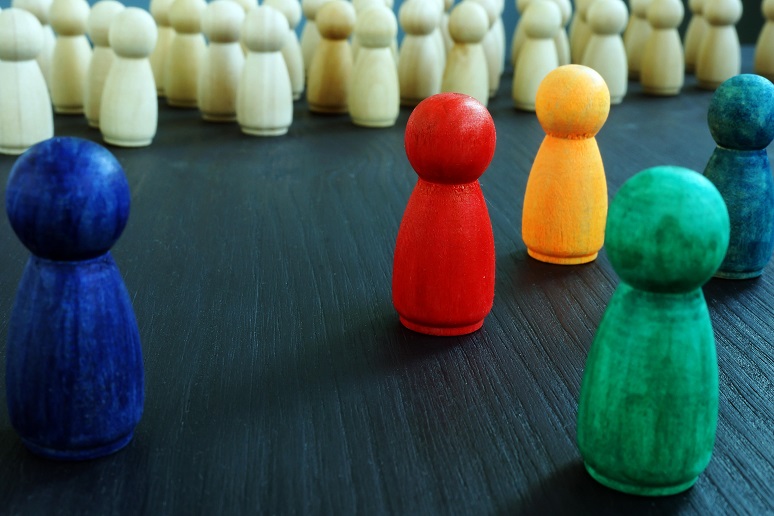We've already
outlined the leadership case for strengthening your workforce hiring and management policies to encompass neurodiverse employees. But for neurodiverse talent to strengthen a workforce, workplace leadership must consider
office design—specifically in three key areas: space, lighting, and HVAC systems.
WorkSpace Connect tapped
Claire Shepherd, chief operating officer (COO), and
Nicola Harris, chief people and culture officer (CPO) at Unispace, to talk about what enterprises can do to recognize and accommodate a range of neurodivergent conditions within their workforce. Shepherd and Harris also discussed how leaders and managers could create inclusive, hypersensitive (less sensory stimuli) and hyposensitive (more sensory stimuli) office environments and start thinking about dynamic work environments that encourage productivity.
Responses have been edited for conciseness and clarity.
What must organizations do to recognize that a range of neurodivergent conditions exist within their workforce?
SHEPHERD: Though people have been talking about different parts of neurodiversity for years—from my perspective, acknowledging its existence in the workplace and realizing how [much of] the workplace is [neurodivergent] is new. We think about 15-20% of the world’s population have a neurodiverse condition, and many different verses are in this statistic. Every study comes out with a slightly different number, but the one I tend to use is 50%—and those [individuals] have dyslexia.
I think the most important thing about recognizing that range of conditions is [realizing] there’s a huge among of positivity about what a neurodivergent person can bring to a business.
First—organizations must acknowledge [neurodiversity] in a positive manner. [Organizations] must spin their thinking to be positive about neurodiversity. What’s coming through is—being neurodivergent in some areas, people have higher than average abilities. [Organizations] must say—we need neurodiversity in our workforce—not we’ve got them, and we need to manage them. It’s a massive asset for neurodiverse people.
HARRIS: I’ll add that neurodiverse people bring a totally different perspective to inclusivity in general. Whether we look at gender, gender association, age profile, or diversity across the workforce, neurodiversity beats one aspect—bringing so many different perspectives to the table and problem-solving in general.
I can give a very specific example where in another role at a previous organization about 18 years ago, I worked for a computer publishing business—writing code type of stuff—and we had indexes. The best indexers are people somewhere on the Autism scale because they see things in a very specific light. At the time, much of this work involved manually going through the books and indexing. The attention to detail was something—somebody who didn’t have that concentration level or focus would have probably missed many of those references. Even though it’s a long time ago—neurodiversity wasn’t mentioned at the time—we recognized that’s where we had the best performance.
What DEI practices must companies embed into their workplace strategy to create inclusive and welcoming work environments for everyone?
SHEPHERD: The key thing about [DEI] programs is that they’ve got to build something that creates the spaces and environments that
give people a sense of belonging. Belonging is a newish word in the DEI world—but I love the word ‘belonging’ over ‘inclusivity—because I think inclusivity can be non-inclusive in its own design by mistake.
Belonging is: "It doesn’t matter who I am—I feel like I belong to this company." That must travel through everything—from the workplace, the environments you’re sitting in, where you can have lunch, work-life balances, ability to go outside and get fresh air. [DEI] programs must focus on basics so that any policies are inclusive, and you [the employee] aren’t reading it and feeling like it doesn’t apply to you or isn’t directed at you.
The word welcoming in your question is key for me because I want to walk into this office, and workplace—which can be huge amounts of different locations—coffee shop, science laboratory. I want to walk into that space, feel included, and not feel like everything is an inconvenience to me.
A person's inability to feel like they belong at work can be a deal breaker for them. How can leaders and managers make employees feel like they matter?
HARRIS: That’s why culture and values are very much a part of that decision-making. We spend a lot of time at work—there’s the basic human need of having to earn money, having the ability to keep a roof over our head, and the whole Maslow’s hierarchy of needs. Part of that is if you feel a sense of belonging in an organization that has a sense of meeting your values, stimulating you intellectually, and you’re then motivated to give your best in that environment—that’s how we, as an employer, have the best return on investment.
With digital transformation accelerating, how can leaders create inclusive, hypersensitive (less sensory stimuli) and hyposensitive (more sensory stimuli) office spaces?
SHEPHERD: [Hypersensitive and hyposensitive] offices impact neurodiverse and neurotypical people. But there’s a lot of association with neurodiversity being more sensitive to noisy offices and how to focus. That’s a broad generalization. However, everyone would benefit from different styles in various work sites and workplaces.
Three key areas make a difference in workplace design. The first is the choice of space—offering and reinforcing a menu of intentional spaces. Not spaces that have become an area—but a well-detailed layered office that says: this space is quiet; for noise, collaboration, or chatting.
Regarding space—it’s thinking about privacy vs. the open office. One of the things about going back to the office is, if you don’t want to have a conversation because you’re feeling a bit upset—you don’t want to be in a glass bowl or meeting room designed with glass doors. Consider wellness or mental health rooms that have things like comfortable pieces of furniture, places to sit, and calming music. Having a choice of space where you can sit and work is one of the critical things you can accommodate people—and this also applies to the atmosphere.
The second area is lights and the ability to maintain them. For example, flickering lights, overly bright lights, or glares bouncing off surfaces drive people mad. That’s a design flaw—it’s a poor design, no matter how your brain functions. Consider natural light in the space—natural light bulbs and windows with natural light coming in. Human beings aren’t made to live in boxes with no windows. Having windows is a movement for mental health purposes. But sometimes, you want darkness—so having those private rooms and recharging spaces with dimmer switches is essential.
The third area is airflow in offices—purifying airflow and planting HVAC ventilation systems. Producing smells in an office is one of the things that causes people the most problems. Smells can positively or negatively impact people. Consider power plants, rubber plants, and English Ivy—all these are excellent at purifying air or making people feel better. Air quality is so important. However you design your office, if you keep these three things in mind, you’re helping everyone—not only neurodiverse people.
HARRIS: Again, it’s about how you feel when you walk into somewhere and where you feel the most comfortable. Within the workplace design strategy, the values and culture of the organization come through in the selection of the environment, furniture, and choice of interior design.
Many neurodiverse employees struggle with sensory issues to the point where it impacts their work. How can employers develop dynamic work environments that encourage productivity rather than relying on traditional/outdated models?
HARRIS: By allowing the ability to choose the best way of working to suit the activity [an employee] is doing at any given time—even if only part of the day. Listening to clients, learning how they operate, collaborate, and what activity levels occur within their environment allows you to develop enough places to fulfill various needs. It all comes back to the point of choice—allowing people to choose where to work and how to operate. It boils down to the individual—how it works best for them at any given time.
What tips do you have for enterprise leaders to support their workforce, attract talent, retain employees, and build a positive company culture?
SHEPHERD: Communication and openness is the biggest tip I can give. Fast track with your staff to get people talking because you get to inclusivity and belonging by involving individuals at all levels, getting people talking, and engaging with staff.
Think about inclusivity in how you recruit and that you’re not biased. Does your process include neurodivergent people? Are you testing where you’re going to get neurotypical or specific types of people? What talents are you wasting by not building these things into your overall approach?
If you’ve got someone who’s happy to talk about diversity and inclusion, get them in front of people to talk about it because the more people who see neurodivergent people in successful positions and have been successful in their lives, the more open and accepting they will be. Being a role model and mentoring people through some of the challenges you go through is key—mentorships, allyships—it’s vastly important. Build trust and get people talking.
HARRIS: For managers, having the confidence to recognize, understand, be familiar, and not be frightened to ask questions and engage with neurodiversity in the workplace. One thing about leadership is—nobody wanted a pandemic to prove that we could work remotely and we don’t need to see people to know they’re being productive—but we needed it. It’s been an interesting journey in that respect. Trust your people. What’s important is the outcome—not always how we get there.





